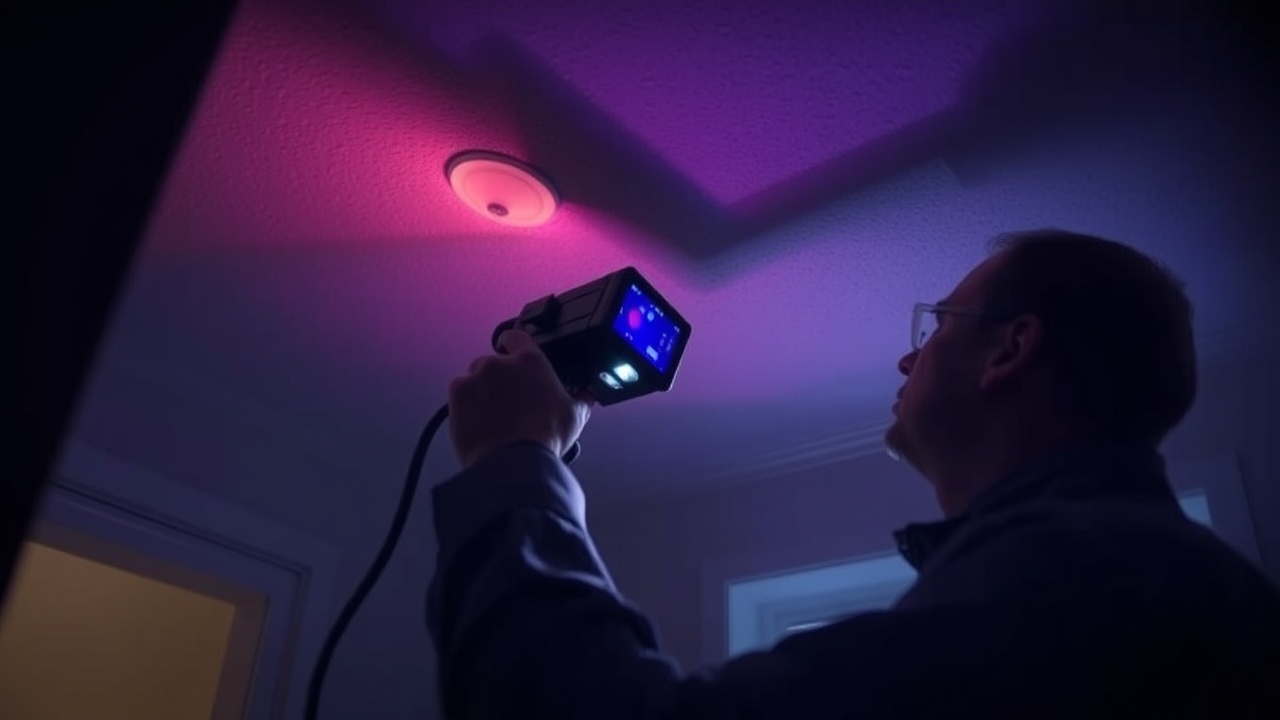Mold growth can be a serious issue in homes and buildings, often hidden from plain sight. Traditional mold inspections may not always uncover these hidden problems. This is where using thermal imaging to detect hidden mold spores becomes essential. This innovative technology allows inspectors to find mold behind walls, under insulation, and in other concealed areas. By utilizing thermal imaging cameras, inspectors can identify temperature differences that indicate moisture accumulation, which is a precursor to mold growth. This proactive approach not only helps in identifying existing mold issues but also aids in preventing future infestations by addressing moisture problems early on. Homeowners and property managers benefit significantly from this technology as it provides a non-invasive method to ensure the integrity of their buildings. With thermal imaging, the detection process becomes quicker and more efficient, ultimately leading to safer living environments.
What is Thermal Imaging?
Thermal imaging utilizes infrared technology to detect temperature variations in surfaces. A thermal imaging camera captures these variations, allowing inspectors to visualize heat patterns that indicate moisture issues. This is particularly useful in identifying areas affected by water damage, which can lead to mold infestation if left unchecked.
How Does Thermal Imaging Work for Mold Detection?
When using thermal imaging to detect hidden mold, inspectors look for temperature differences that may indicate hidden moisture. This non-invasive technology allows professionals to identify areas in a building that may be at risk for mold growth. Areas with a higher concentration of moisture tend to have a different thermal profile than surrounding areas, making them stand out during inspections. By detecting these variations in temperature, inspectors can pinpoint potential mold locations without invasive procedures, which not only saves time but also minimizes damage to the property. Thermal imaging can help in assessing the extent of moisture intrusion, allowing for a more effective remediation strategy. This method is particularly useful in hard-to-reach areas such as behind walls or under flooring, where mold may thrive without being visible to the naked eye. Overall, using thermal imaging as a proactive approach to mold detection can significantly enhance the effectiveness of mold management and prevention efforts.
Benefits of Using Thermal Imaging to Detect Mold
- Non-Invasive Inspection: Thermal imaging allows for a thorough inspection without the need for destructive testing.
- Early Detection: Identifying moisture issues before mold growth occurs can prevent extensive damage and health risks.
- Comprehensive Mold Inspection: Inspectors can uncover hidden mold spores in areas that are typically inaccessible.
- Efficient Leak Detection: Thermal imaging cameras are effective tools for identifying water leaks that may contribute to mold growth.
How to Conduct a Thermal Imaging Inspection
During a comprehensive mold inspection, a certified mold inspector will utilize advanced technology, specifically a thermal imaging camera, to meticulously scan areas that are prone to moisture problems. These areas typically include:
- Behind walls, where hidden leaks may occur, leading to mold growth.
- Underneath sinks, which are often exposed to plumbing issues or condensation that can foster mold.
- Near HVAC systems, where humidity levels can fluctuate and create ideal conditions for mold development.
- In attics and crawl spaces, which are frequently overlooked but can harbor moisture and mold due to poor ventilation.
The inspector will carefully analyze the thermal images captured during the inspection to detect areas of concern that may not be visible to the naked eye. If the thermal imaging reveals any anomalies, the inspector may recommend further mold testing to confirm the presence of mold and assess its type and concentration. This thorough process ensures that all potential mold issues are identified and addressed promptly, protecting the health of the occupants and the integrity of the property.
Conclusion
In conclusion, using thermal imaging to detect hidden mold spores is a powerful tool in maintaining a safe and healthy environment. This technology offers a non-invasive method for identifying moisture and potential mold growth, allowing for early intervention and remediation. If you suspect mold issues in your home, consider contacting a professional mold inspection and testing service that utilizes thermal imaging.
